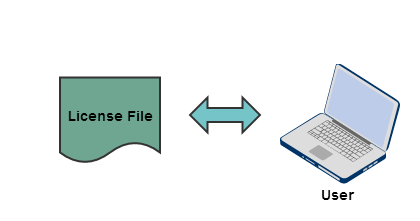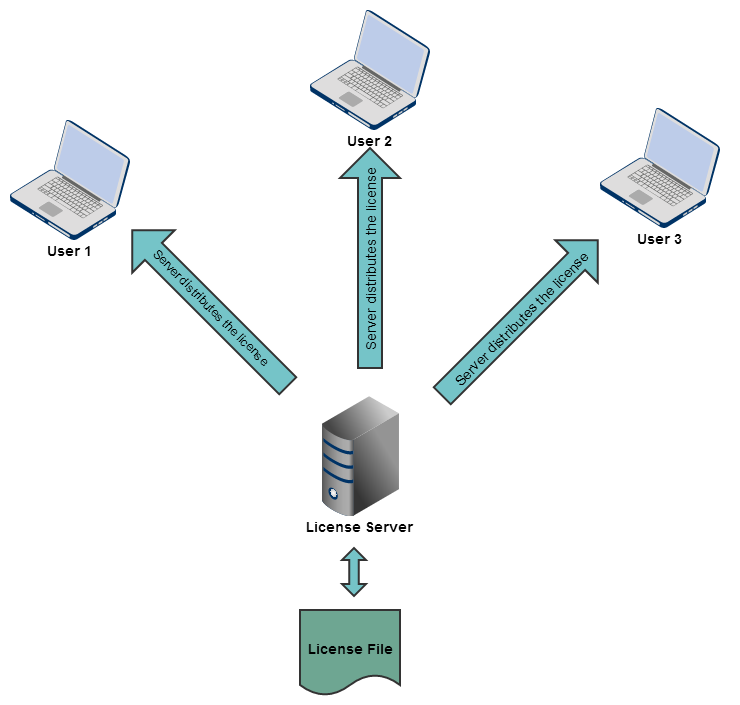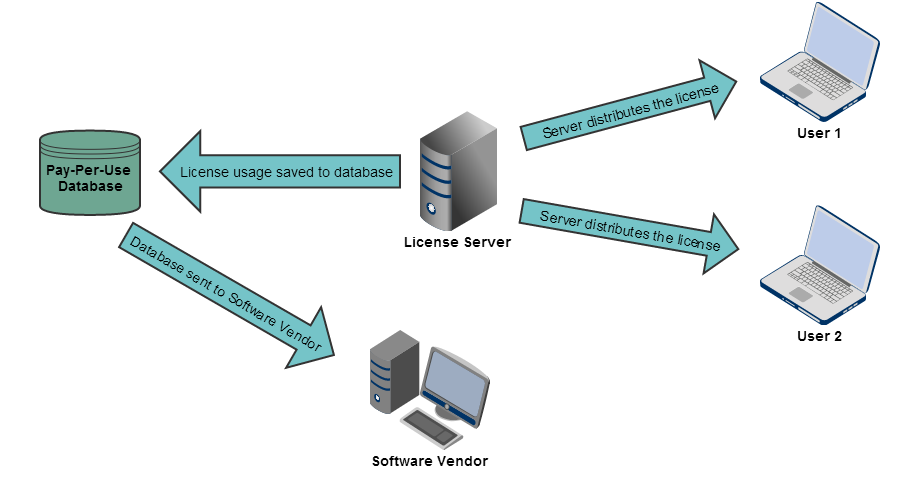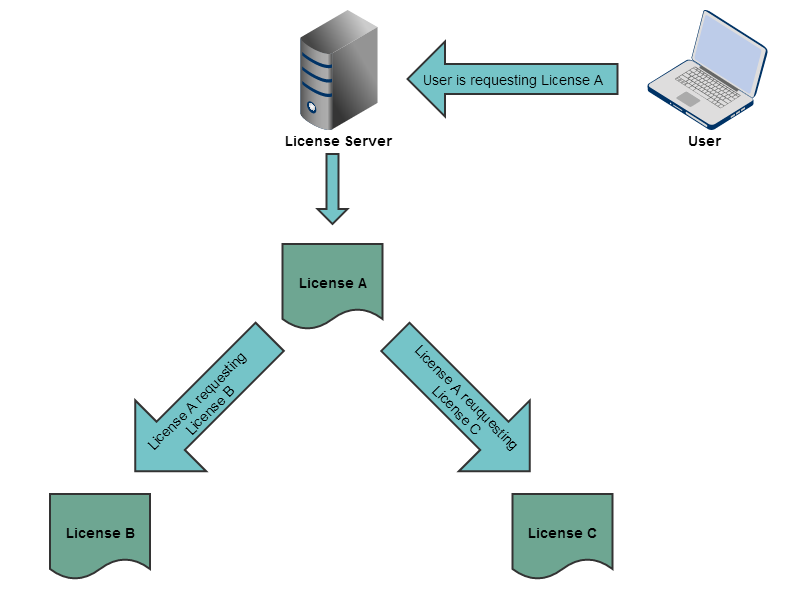Establish a license policy that suits your business. LM-X is configurable for a large variety of different license schemes, which usually consists of one or more features in your software. If your application has more than one differently licensed module, the license file will contain multiple features.
Node-locked licenses
Designed for individual users/machines, node-locked licenses allow a single instance of an application to run on a specified host. LM-X lets you determine which HostID type to use to specify the machine you want to lock your licensed application to. For example, you can use an Ethernet card, BIOS, Hasp HL dongle or harddisk HostID.
Floating/network licenses
Floating/network licenses allow multiple users to install and use a limited number of licenses on multiple machines.
Example
Suppose you have 10 workstations where Program X is used. In most cases there are fewer than 10 users concurrently using the application. Instead of purchasing 10 licenses, you can only purchase the number of floating licenses to support the number of concurrent users. Some highlights of the benefits of floating licenses include centralized license management and maximum utilization of each license.
Determining whether to use node-locked or floating licenses depends on your end user's needs and how you prefer to distribute your software.
Trial licenses
Trial licenses allow users to evaluate your software before purchase.
Time-limited licenses
Time-limited licenses are used for restricting usage periods and for subscription-based licensing models.
Pay-per use licenses
Pay-per-use licenses are used for back-billing customers based on their actual usage.
Token-based
Token-based licensing is used for bundling products in diverse ways, such as creating license pools and product suites.
.





